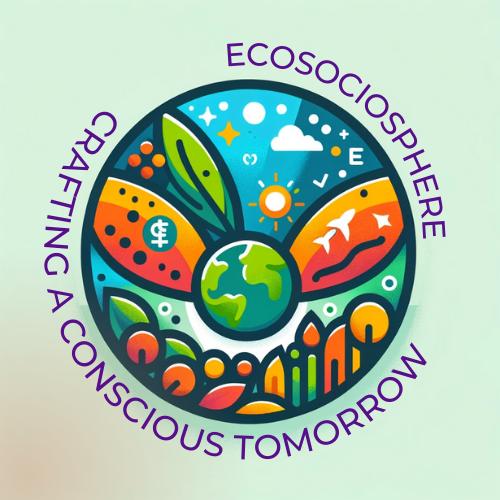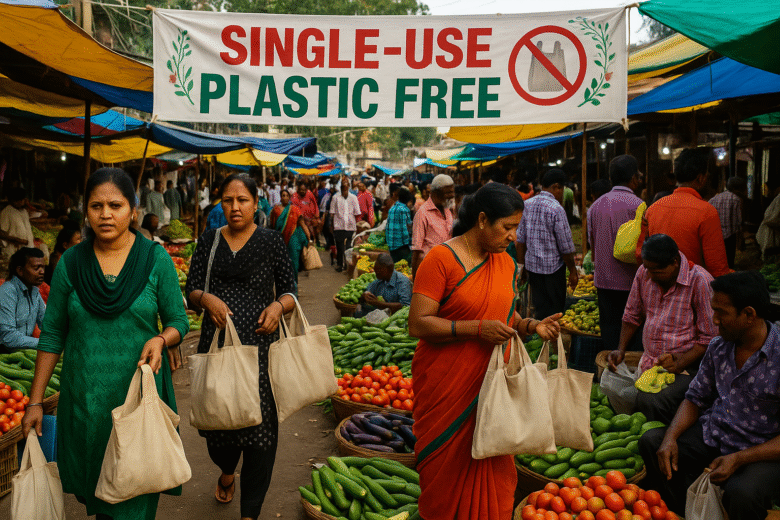Fun Fact: India declared a ban on certain single-use plastic (SUP) items — like plastic straws, cups and plates less than 100 microns thick — from 1 July 2022 under the amended Plastic Waste Management Rules.
When we talk about the title “Plastic Uprising: How Communities Are Saying No to Single-Use at Scale”, what we really mean is this: ordinary towns and districts are refusing to allow tonnes of throw-away plastics to keep ruling their streets, markets and homes. Because plastic isn’t just litter—it’s an attitude. And when communities decide enough is enough, the tide can change.
Making a Ban Stick: The Case of Nuapada (Odisha)
In early June 2025, Nuapada became the first district in Odisha to be officially declared single-use plastic free. The move wasn’t symbolic—it included:
- Setting up 103 segregation sheds at village level and two plastic waste-management units.
- Running over 700 cleanliness drives and collecting plastics at scale.
- Planting 1 lakh saplings and creating 500 green buffer zones.
Why did Nuapada succeed where others hesitate? Because of community mobilisation + administrative support + visible infrastructure. The “uprising” came from the streets, then was backed up by the administration.
What Makes Community-Driven Bans Work
From Nuapada and similar districts, the ingredients of success appear to be:
Visible leadership and clear target: The district publicly declared itself SUP-free by a certain date. That urgency builds momentum.
Infrastructure and alternatives: Bans alone fail if there is no alternative. Nuapada’s sheds and collecting units matter.
Awareness + enforcement: Clean-up drives and raids go hand-in-hand. One without the other becomes cosmetic.
Scale and all-round participation: Rural and urban both covered; market vendors, citizens, schools, locals involved.
What Doesn’t Work: The gaps, the back-slips
However, bans also often stumble. Here’s why:
Enforcement fatigue: While a one-month campaign hits headlines, keeping the momentum months later is harder. As seen in other states, the plastic tide rises again if ban enforcement relaxes.
Lack of affordable alternatives: If local shops have no cheap, accessible substitute for plastic bags or cups, compliance suffers.
Market resistance and livelihoods ignored: Vendors, small manufacturers of SUP items may oppose the change—without their buy-in, the system cracks.
Embedded culture and convenience: Everyday habits—buying water bottles, using plastic food packaging—are hard to break without deep behaviour change.

Scaling the Uprising: District-Level Momentum
When a district like Nuapada takes action, it becomes a model for neighbouring areas. The ban underlines a broader national shift: the SUP items identified by the Indian central government include ear-buds with plastic sticks, straws, plates, cups, wrapping films, and plastic carry bags thinner than 120 microns.
Other districts are showing signs of this trend: for example, the Sambalpur Municipal Corporation in Odisha recently seized over 100 kg of banned SUP material and collected fines in the hundreds of thousands of rupees.
These signs tell us two things: the rules are in place, and citizens plus local bodies can act. But to truly achieve change at scale, many more districts will need to turn their plastic policy into lived reality.
A Simple Anecdote: The Cup That Changed Hands
Picture a weekly market in a small district town. Vendor sells snacks; used to hand over a plastic cup and straw. A local volunteer group turns up, hands the vendor compostable cups made of banana leaves, explains the ban, and the deputy collector gives a small talk.
Two months later, shoppers arrive carrying their jute bags; the vendor’s cost of plastic drops to zero; the waste bin next to the stall is no longer a pile of colourful cups but a small stack of discarded banana leaves. This is the quiet revolution. And yes, it took inconvenience, yes it took training, but when people feel part of the solution, plastic begins to shrink.
Conclusion: The Plastic Uprising Is Ours to Join
The phrase “Plastic Uprising” isn’t just based on Nuapada’s story—it carries a challenge. If one district can pivot from habit-heavy plastic use to a public movement, others can too. But we need more than policies. We need local leadership, infrastructure, alternatives, and above all, community consent.
Here’s your call to action: look around your town, your district—what single-use plastic habits have become invisible? Could your community declare itself SUP-free? Could your market swap plastic cups for cloth or banana-leaf alternatives? Because when communities say no at scale, the plastic tide doesn’t just recede—it begins to reverse.
Author’s Note
I once watched a child in a village toss a colourful plastic straw into a bush, then turn and walk away. The bush looked normal, but the straw looked wrong. Writing about this topic mattered because I want us to see what our eyes often ignore. Writing is not just about information—it’s about awakening our daily choices. And if a straw can become an indicator of larger change, then perhaps our collective habit can become part of that change too.
G.C., Ecosociosphere contributor.
References and Further Reading
- Nuapada becomes first single-use plastic free district in Odisha
- Nuapada district campaign against single-use plastic
- Ban on Single Use Plastics — Government of India Press Information Bureau
- Single-Use Plastic Ban in India (Odisha Review article)
- SMC collects ₹3.91L in fines, seizes over 100 kg single-use plastic
- Andhra Pradesh government revives anti-plastic drive with new incentives




